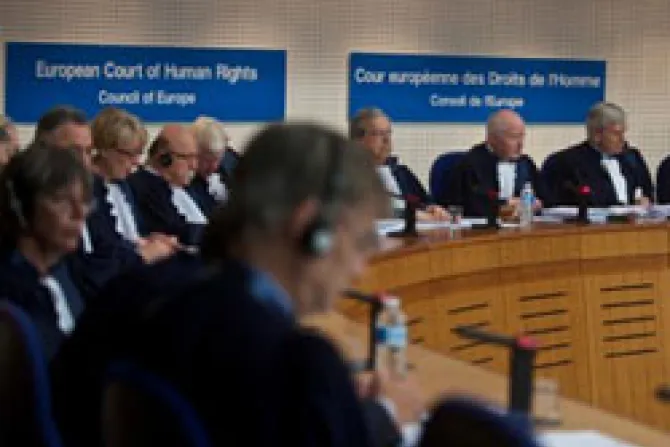Strasbourg, France, Mar 18, 2011 / 10:08 am
Updated on March 18, 2011 at 4:26 p.m. MST.
The European Court of Human Rights has ruled that Italian public schools can continue to display crucifixes in classrooms, providing a final resolution to a case that had sparked concern about aggressive secularism on the continent.
The new ruling overturns an earlier judgment by a lower chamber of the same court, which declared in 2009 that the crosses violated students' human rights and represented a form of religious discrimination.
Seventeen judges of the Grand Chamber gave the 15-2 ruling on March 18, holding that there had been “no violation of Article 2 of Protocol No. 1 (right to education) to the European Convention on Human Rights.” The protocol requires that state schools “shall respect the right of parents to ensure … education and teaching in conformity with their own religions and philosophical convictions.”
In 2009, a lower chamber ruled that the crucifixes violated that protocol, as well as another provision guaranteeing “freedom of thought, conscience, and religion.” The court's new ruling also dismissed the challenge based on that statute.
The decision, which cannot be appealed within the European system, concludes a five-year legal battle that began in 2006. An Italian mother of two non-Catholic students had complained to the court that the crucifix displays were a form of involuntary religious indoctrination.
In a summary of the Grand Chamber's March 18 ruling, Court Registrar Erik Fribergh explained that the judges had found “nothing to suggest that the authorities were intolerant of pupils who believed in other religions, were non-believers or who held non-religious philosophical convictions.”
The registrar noted that the mother who brought the complaint on behalf of her children, had never cited any actual instances of religious indoctrination.
“The applicants had not asserted that the presence of the crucifix in classrooms had encouraged the development of teaching practices with a proselytising tendency,” Fribergh stated. Nor had she claimed that either of her children “had ever experienced a tendentious reference to the crucifix by a teacher.”
European Christians, however, may be surprised by at least one aspect of the judgment – in which the judges observed that the crucifixes may have little effect upon students.
“While the crucifix was above all a religious symbol,” wrote the registrar, “there was no evidence before the Court that the display of such a symbol on classroom walls might have an influence on pupils.”
But the Bishops' Conference of the European Community, in their joint response, stressed that the cross was not about to lose its significance for Europeans.
“The crucifix symbolizes the crucifixion and resurrection of Jesus Christ,” they wrote, giving their approval of the ruling. “Christians from all denominations therefore see in the cross the symbol of God’s comprehensive love for all mankind.”
“To believers from other religions and even to non-believers, the cross can be valued as a symbol for non-violence and resistance to retaliation,” the noted. “Its public display reminds all human beings of the respect for human dignity, a principle from which all fundamental rights are derived.”
The president of the European bishops' conference, Cardinal Peter Erdo, hailed the definitive ruling as “a sign of common sense, wisdom and freedom.”
“Today a page of history has been written,” he announced. “New hope has been given not just to Christians, but to all European citizens, believers and secularists, who were deeply offended by the ruling of November 3, 2009.”
(Story continues below)
“To consider the presence of the crucifix in a public space to be against human rights, would be to deny the very idea of Europe,” he observed.
“Without the crucifix, the Europe we know today would not exist.”


